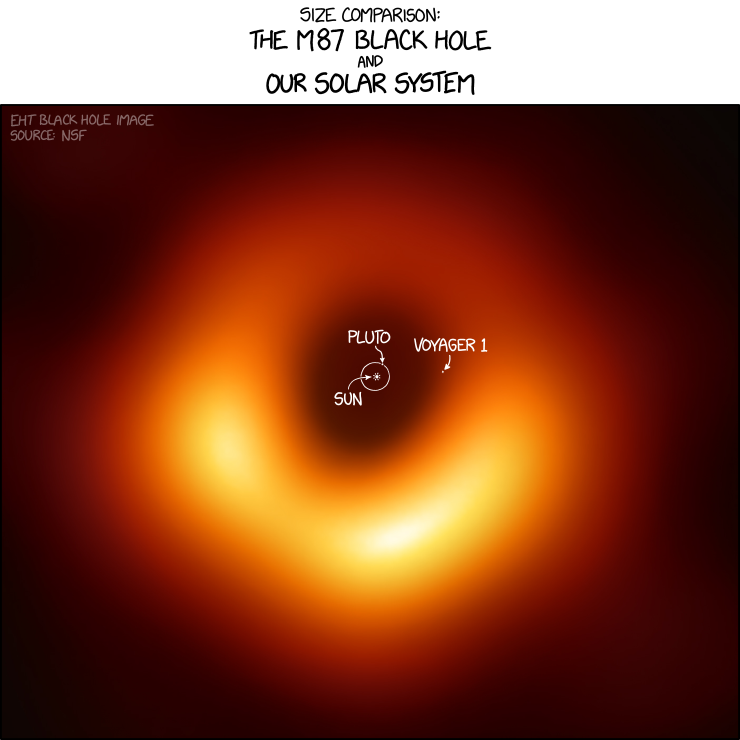M87 Black Hole Size Comparison

I think Voyager 1 would be just past the event horizon, but slightly less than halfway to the bright ring.

I think Voyager 1 would be just past the event horizon, but slightly less than halfway to the bright ring.
This comic shows the picture of the M87 black hole by the Event Horizon Telescope that was published on the same day as this comic. Overlaid on the picture is a scale image of the Solar System, showing the Sun, Pluto (one of the most well-known dwarf planets) and its orbital path, and Voyager 1, a deep-space probe and the current farthest probe from Earth. The comic is quite similar to 1551: Pluto, in which Randall overlaid annotations onto the recently-released first images of Pluto taken by the New Horizons spacecraft.
The point of the comic is to celebrate the release of this image by the Event Horizon Telescope, referenced two comics earlier, in 2133: EHT Black Hole Picture, as well as to indicate the hugeness of M87 and the awe-inspiring thing that space is. This image has been widely publicized as being the first image ever of a black hole. Science had no visual evidence of black holes at all until 2012.
In the title text Randall hypothesizes that if the Sun were at the center of M87, Voyager would be outside the event horizon. This is confirmed by a 2015 study in which the Schwartzchild radius of M87* was found to be 5.9x10-4 pc, as opposed to the distance of 7.04x10-4 pc, at the time the comic was written, between Voyager 1 and the Sun.
The comic's scale seems to be slightly small; while the orbit of Pluto should be about 4.9 microarcseconds across, in the comic it's about 3.9 microarcseconds across.